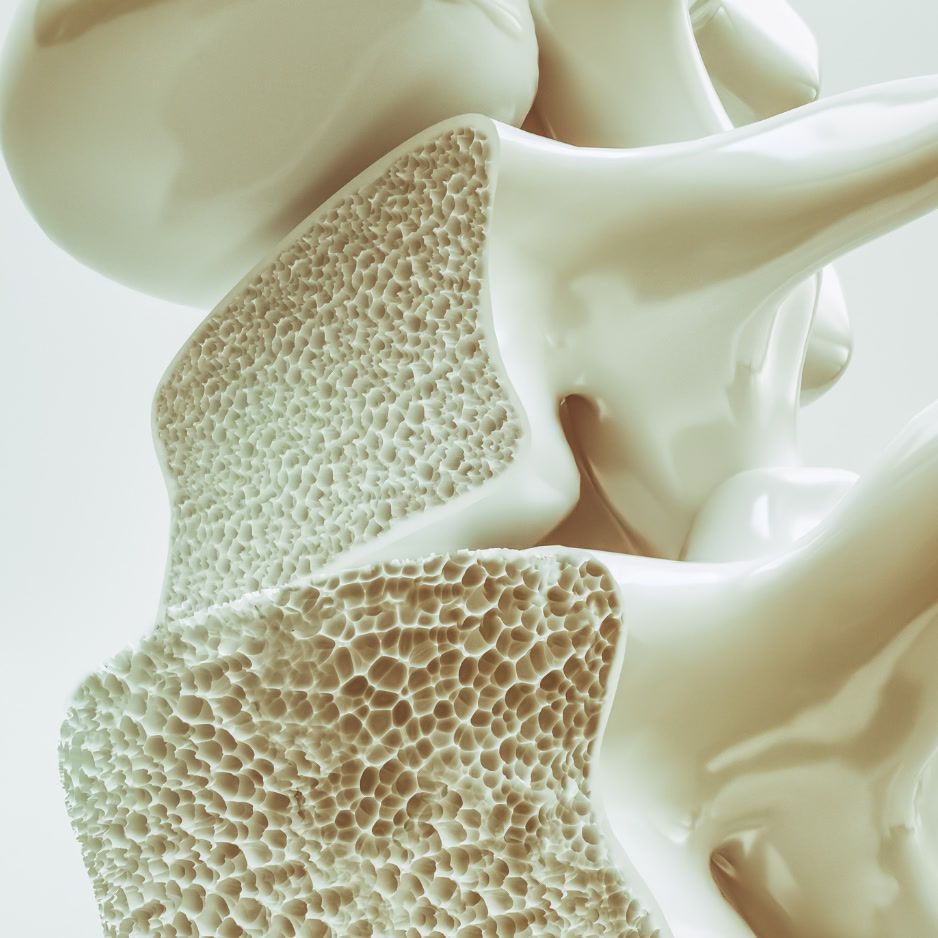20% Body Fat in Males: Appearance, Health, and Measurement
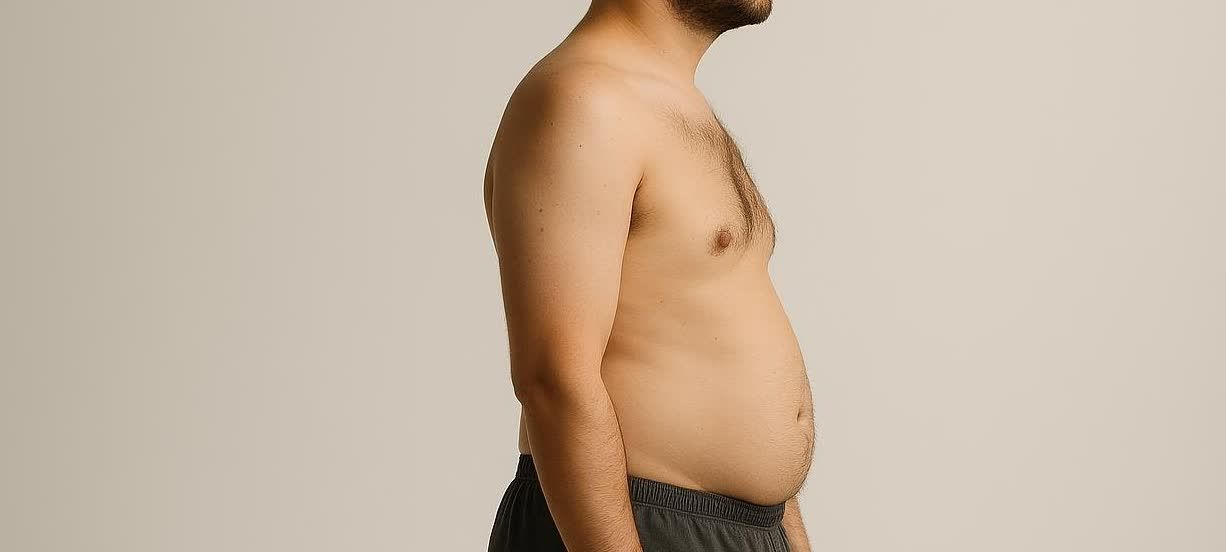
20% Body Fat in Males: Looks, Health & How to Measure
Understanding 20% body fat in males involves key questions about its health implications, measurement accuracy, and strategies for getting leaner. This guide covers all three with clear, practical tips you can use today. For any man targeting or assessing 20% body fat, this guide offers a science‑backed overview.
TL;DR
- Appearance: Softer midsection, minimal ab definition, mild muscle outline.
- Health category: 18–24% is commonly considered “acceptable/average.”
- Population context: U.S. adult men average ~28% body fat—20% is below average.
- Key risk check: Waist ≥ 40 inches signals higher cardiometabolic risk.
- Best measurement: DEXA for body fat %, regional lean, and visceral fat.
- Abs target: Clear abs typically appear around 10–12% body fat.
Helpful tools and guides:
- BodySpec’s free body fat calculator
- Visual guide to male body fat percentages
- Our guide to body fat percentage for visible abs
What 20% Body Fat Typically Looks Like on Men
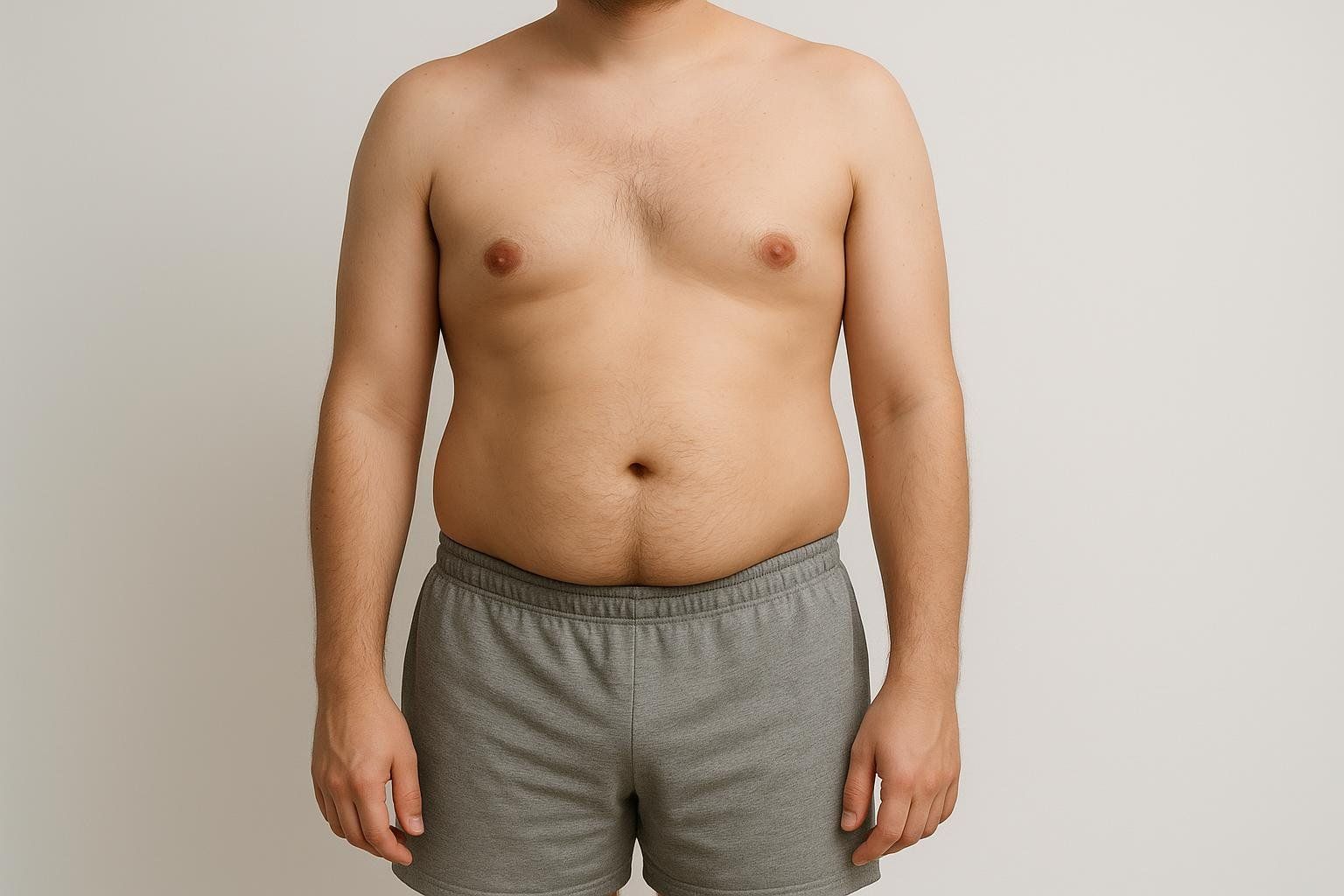
At ~20% body fat:
- Midsection: Softer waist; ab muscles aren’t distinctly visible in most lighting.
- Upper body: Muscle is present but less defined; shoulder and chest separation is muted.
- Arms/legs: Muscle is visible, but veins and fine definition are limited.
- Clothes: Standard sizes fit comfortably; shirts may feel snug around the midsection when seated.
Appearance varies with genetics and muscle mass. A man with higher muscle mass will look more athletic at 20% body fat than a man with less, as the underlying muscle provides a stronger shape.
For side-by-side context across ranges, check our visual guide to male body fat percentages.
Is 20% Body Fat Healthy for Men?
Short answer: Often, yes. Twenty percent sits in the commonly cited “acceptable/average” range for non-athlete men, as summarized in this Healthline overview. It’s also below the U.S. average for adult men (~28%), so many men at 20% are leaner than the national mean, as reported by Verywell Health’s chart.
But the number alone doesn’t tell the whole story. Fat distribution matters:
- Belly/visceral fat carries more risk than fat under the skin. A waist ≥ 40 inches in men is a practical high‑risk marker, according to Cleveland Clinic’s explainer on visceral fat.
- Even with a healthy BMI, extra belly fat raises heart risk, per the American Heart Association’s guidance on abdominal obesity.
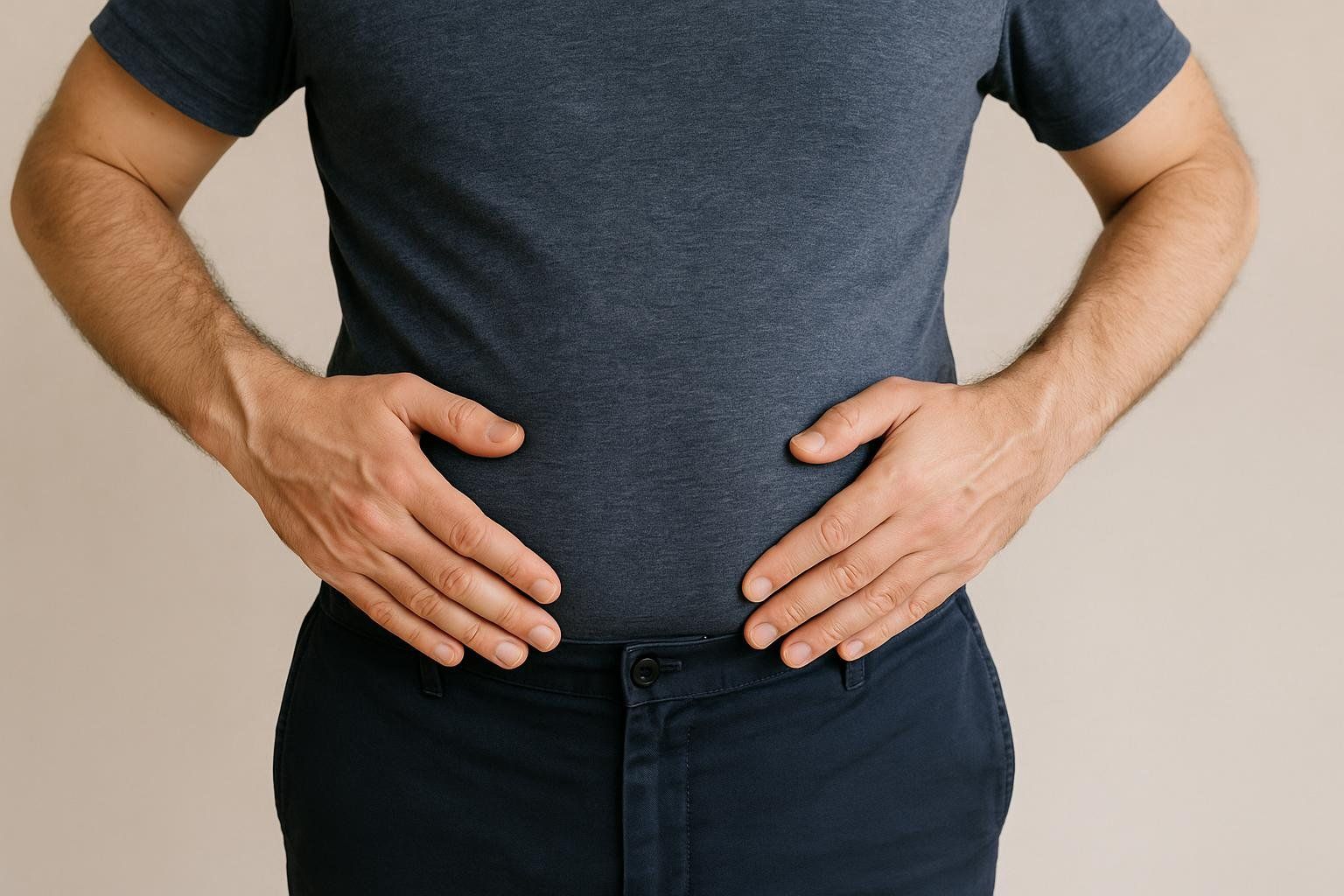
If your waist is comfortably under that threshold and visceral fat is low, 20% can align with solid health markers.
Related read: Visceral fat ranges for men: healthy levels and how to reduce them.
How to Accurately Measure 20% Body Fat
Eyeballing photos is hit-or-miss. Here’s how to measure smart.
Accuracy hierarchy (and what each method misses)
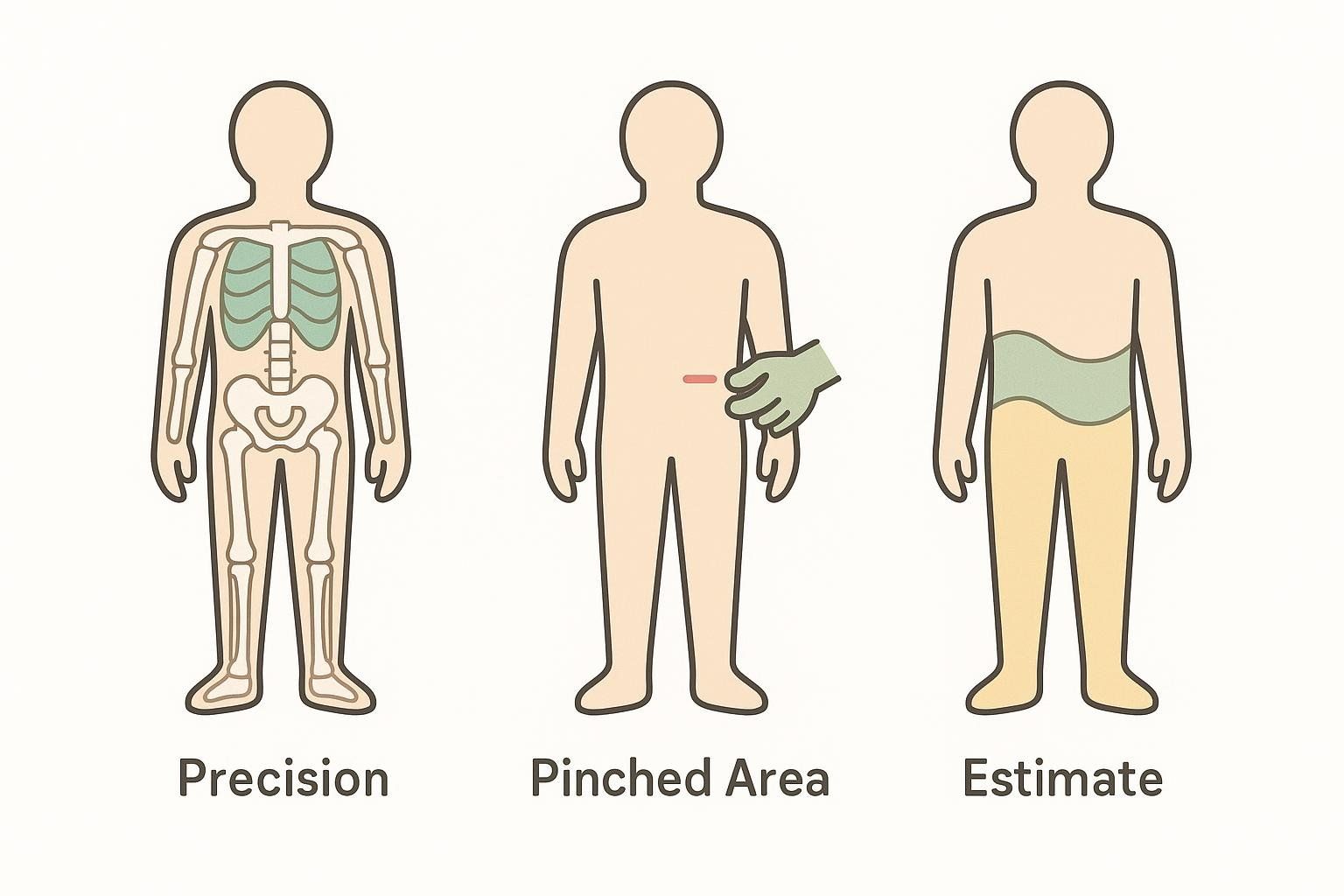
| Method | What it tells you | Typical pitfalls | Best use |
|---|---|---|---|
| DEXA | Body fat %, regional fat/lean, visceral fat estimate, bone density | Requires appointment | Precise baseline and progress tracking |
| Skinfold calipers | Field estimate of subcutaneous fat | Highly skill-dependent | Trend tracking if the same trained tech measures you each time |
| BIA smart scales | At-home body fat estimate | Hydration-sensitive; often underestimates vs DEXA | Directional trends only |
| Tape measure (waist) | Central fat risk proxy | Technique-dependent | Easy at-home screen for belly fat risk |
- Research frequently uses DEXA as a criterion method; BIA devices often underestimate body fat compared to DEXA, as shown in a comparative study of BIA vs. DEXA in athletes.
- For home checks, add a waist measure: follow our step-by-step guide to nail the technique and interpretation: how to measure your waist.
Ready for lab-grade accuracy (plus visceral fat)? Book your DEXA scan. Curious how we keep readings consistent? See our DEXA accuracy guide and our comparison of InBody vs. DEXA.
20% Body Fat and Visible Abs: What’s Realistic?
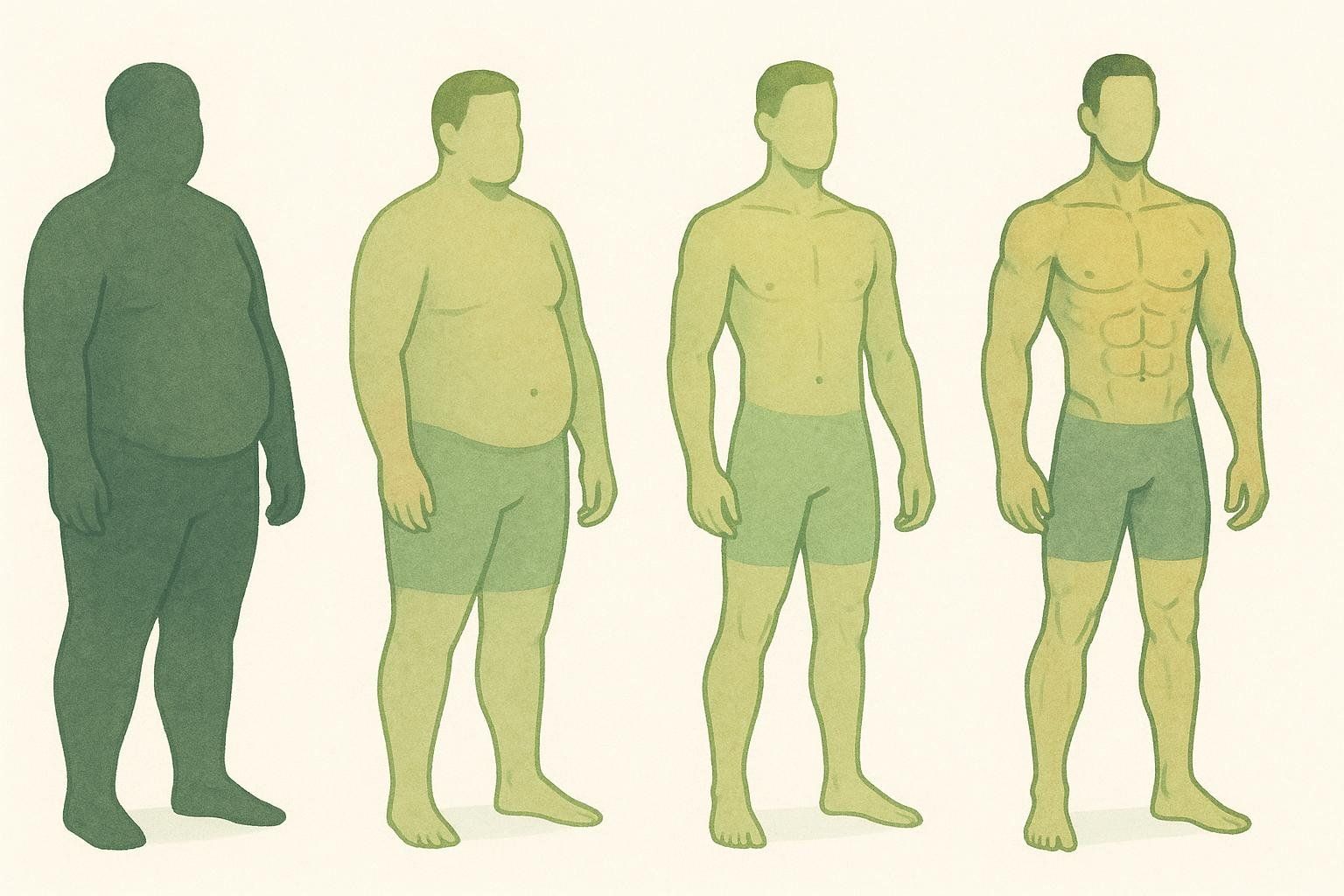
At ~20%, most men won’t see a defined six‑pack. Clear ab visibility typically appears closer to 10–12% for men—see Healthline’s guide to body fat for abs and our in‑depth take on the body fat percentage needed for visible abs for examples and tips.
How to Go From 20% to 12% Body Fat
You don’t need extreme diets. Aim for steady, muscle‑preserving fat loss.
- Establish your baseline
- Get a DEXA scan for body fat %, visceral fat, and regional lean mass (book your DEXA scan)
- Take front/side/back photos in consistent lighting
- Record a morning waist circumference (how-to guide)
- Set a realistic pace
- A daily calorie deficit of about 300–500 calories, paired with resistance training and adequate protein, helps preserve lean mass while you lose fat, according to the ISSN position stand.
- Train to keep muscle while you cut

- Perform resistance training 2–3 days per week for all major muscle groups, per the ACSM exercise recommendations.
- Accumulate ~150 minutes/week of moderate‑intensity cardio (or ~75 minutes vigorous), per the ACSM exercise recommendations.
- Increase daily movement to raise non‑exercise activity (many people use a step goal) to support a modest weekly calorie deficit.
- Eat for satiety and recovery
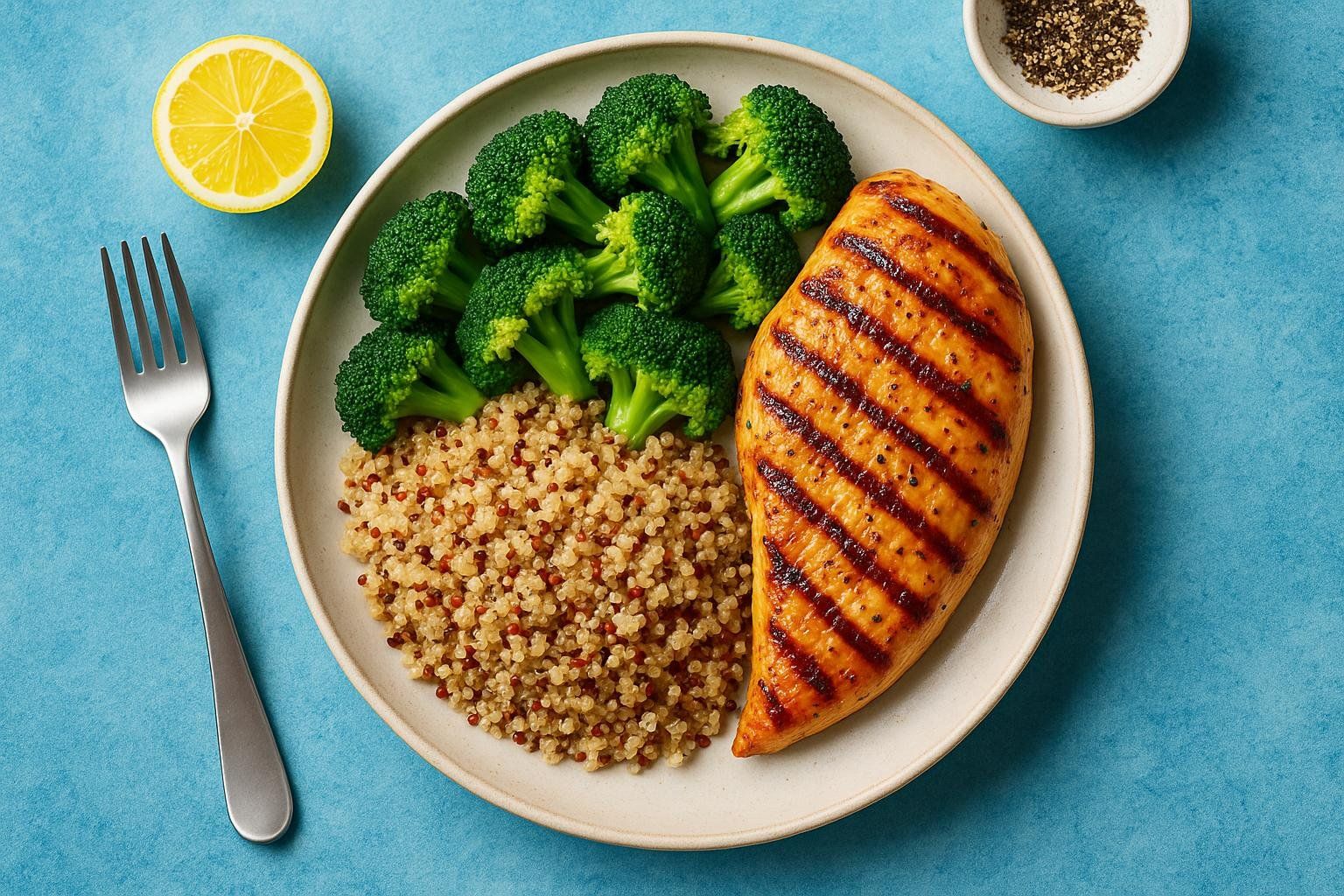
- Center meals on protein and high‑fiber carbs/veggies; aim for 1.4–2.0 g protein/kg/day, a range supported by the International Society of Sports Nutrition.
- Minimize ultra‑processed snacks and sugary drinks
- Hydrate consistently
- Sleep and stress (your secret weapons)
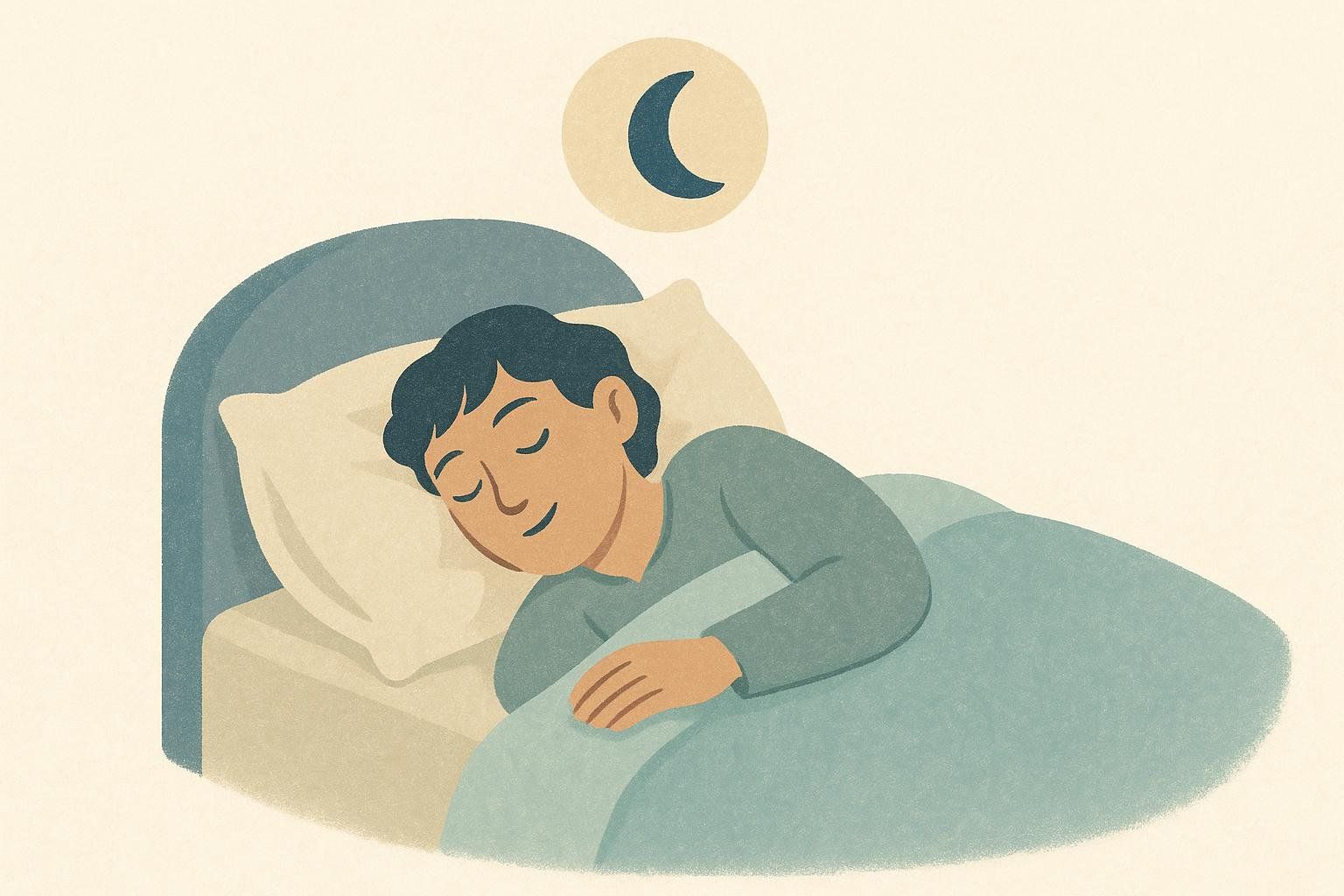
- Aim for 7–9 hours per night; a simple wind‑down routine helps
- Chronic stress can contribute to belly fat, according to Harvard Health’s explainer on belly fat. Manage it with short walks, breath work, or light stretching.
- Re‑measure and adjust
- Keep your pre‑measurement routine consistent—especially hydration status—when using at‑home BIA smart scales to ensure cleaner trend data.
- Recheck waist weekly; re‑scan with DEXA every 8–12 weeks to confirm you’re losing fat (not muscle) and that visceral fat is trending down. Turn numbers into action with our guide: interpreting your DEXA results.
Pro tip: When cutting from ~20% toward ~12% body fat, aim to lose about 0.5–1.0% of body weight per week to maximize fat loss while preserving muscle.
Frequently Asked Questions
Is 20% body fat good for men?
Generally, yes—it falls within commonly cited “acceptable/average” ranges and is below the U.S. male average. Personalize your assessment by checking waist size and visceral fat.
Will I have abs at 20%?
Usually not. Most men see clear ab definition closer to 10–12%. See the abs section above for details.
Which measurement method should I trust?
Use DEXA for your baseline and progress checks. Calipers can work with a consistent, trained technician; BIA smart scales are best for trends. See the measurement section above.
Does where I store fat matter at 20%?
Yes. Central/visceral fat carries greater risk than fat stored elsewhere. Monitor your waist and consider tracking visceral fat.
How long does it take to go from ~20% to ~12%?
Timelines vary. Focus on a modest calorie deficit, consistent training, and regular re-measurement (DEXA every 8–12 weeks) to ensure you’re losing fat while preserving muscle.
Key Takeaways
- 20% body fat in men is common and generally acceptable for health—especially if your waist is < 40 inches.
- For heart and metabolic risk, central fat matters most: track your waist and, if possible, your DEXA visceral fat.
- To work toward getting visible abs, most men will target 10–12%. Keep it sustainable: lift, move, sleep, and re‑measure.
- Upgrade from guessing to knowing— book a DEXA scan to get precise body fat %, muscle, bone, and visceral fat data.


